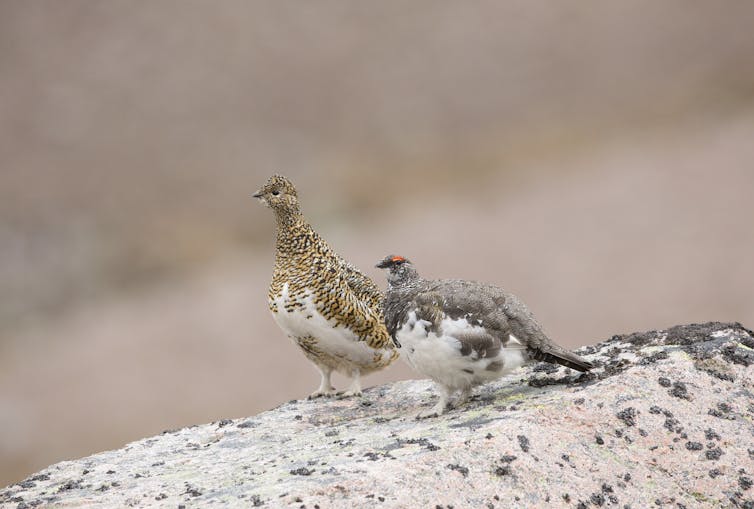By Mark Forbes
This article is republished from The Conversation under a Creative Commons licence. All photos provided by The Conversation from various sources.
Parasitism occurs when one species — the parasite — benefits from resources it takes from another, usually larger, host species to the detriment of host individuals.
Why some host individuals carry more parasites than others has intrigued biologists. These levels of parasitism are proxies for the amount of resources taken by parasites, which often results in costs to hosts: for example, lowered reproduction or survival.
But what determines variation in the level of parasitism and why is it important? Common parasites and their hosts are thought to be engaged in co-evolutionary arms races, wherein adaptations by parasites to better infect host species and extract host resources are countered by host adaptations like resistance and tolerance to reduce the occurrence and costs of parasitism.
A case (or two) in point
Parasites which affect reproduction and survival of female hosts are much more likely to affect population dynamics than parasites which affect survival and mating success of males because males are not as important to the mathematics of population growth. Notably though, a parasite which reduces male fitness might influence the genetic makeup of future populations: say, the frequency of genes coding for resistance to parasites. It may seem inherently just that the parasites contribute to a host population that is more resistant to them.
So, what can explain variation in levels of parasitism? The sex and age of hosts are good predictors of the level of parasitism in a wide range of organisms. Research has attempted to explain both the causes and consequences of sex or age biases in parasitism. By studying the variation in parasitism for the different sexes (or ages) of hosts, we may also gain insight into the biological factors affecting exposure and transmission of parasites.
For example, females might herd or flock together with juveniles and segregate from adult males. Such behaviours might predict similar levels of infection of contagious parasites among females and juveniles, as compared to adult males. Knowing which types of individuals are more susceptible to parasites has value toward managing parasitic spread in both wildlife and domestic animals. Those individuals can then be targeted for anti-parasite treatments or campaigns.
Still, other factors might account for significant variation in levels of parasitism. One biological factor is variation in infection by other parasite species, referred to as co-infection. Co-infection studies have gained popularity from the realization that most host individuals are multi-parasite hosts, who are co-infected with different parasite species.
Icelandic rock ptarmigan
One way to explore the relative contributions of host traits and co-infection to variation in level of parasitism by focal species is to include all factors in advanced statistical models — an approach recently undertaken with a unique long-term dataset on the parasite fauna of Icelandic rock ptarmigan. This population was initially chosen for testing whether costs imposed by parasites might help explain the multi-annual cycles of abundance of this bird.

Our study followed the abundance of nine plumage or skin parasites and three gut parasite species, in samples taken annually from juvenile and adult male and female rock ptarmigan. The study was conducted over 12 autumns in Northeastern Iceland, near Lake Mývatn.
We found repeatable sex and age biases in parasitism across years — these could be explained by differences in exposure to parasites, acquired immunity and/or parasite-induced mortality of juveniles. Intriguingly, co-infecting parasites also were important explanatory factors as level of infection by different species predicted level of infection by focal species.
But here’s the thing: together, host traits and co-infection accounted for between one and 34 per cent of variation in levels of parasitism in rock ptarmigan. More, or moderate, variation was explained if the parasite species was common, possibly because there was more variation in abundance of those common parasites to be explained.
Intriguingly, more than 65 per cent of variation in parasitism remained unexplained. There are probably a lot of chance encounters that account for variation among individuals in level of parasitism or effects relating to weather patterns, which might also be linked to viability of infectious stages and ultimately infection levels by parasites.
The differences in parasitism between groups of individuals — male versus female, juvenile versus adult, co-infected versus not — likely influences how a host population responds to parasitism over time. And these responses, in turn, have consequences for the evolution of becoming a better or worse host for its parasites.
![]()
Monday, August 9, 2021 in The Conversation
Share: Twitter, Facebook



